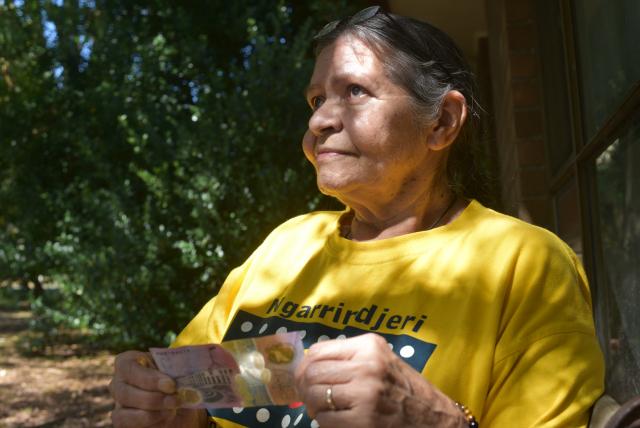
Charlotte Varcoe
THE great niece of David Unaipon has spoken about the sense of pride she felt when it was announced an Indigenous figure would feature on the five dollar note, instead of King Charles III.
The Reserve Bank of Australia announced earlier this month it had made the call to replace Queen Elizabeth II’s portrait with one of an Indigenous person following her death last year.
Ngarrindjeri woman Elaine Kropinyeri spoke highly of the decision, after talking about her personal experience in going through the process of approving her great uncle Daivd Unaipon on the 50 dollar note.
Mr Unaipon is known within Australian history for his contribution to science and literature, as well as improvements in the conditions of Aboriginal people.
Born on September 28, 1872 at the Point McLeay Mission, Mr Unaipon went on to improve the hand tool used for shearing sheep, a centrifugal motor, a multi-radial wheel and a mechanical propulsion device.
In as early as 1914, he also anticipated the helicopter by applying the principle of the boomerang and spent his life searching for the secret of perpetual motion.
He was also the first Aboriginal writer to become published.
Despite passing away in 1967 – the same year First Nations people became recognised under the Australian Constitution – Mr Unaipon’s memory lives on after having his portrait placed on the 50 dollar note in 1995.
Speaking with The Border Watch about the pride she felt when she met with the Reserve Bank of Australia to approve the artwork, Ms Kropinyeri said having more Indigenous people on Australian currency would provoke conversations about the true history of Indigenous people.
“When Uncle David was put on the 50 dollar note, my mother, sister, brother and I met with the bank board members and their artist and to see the beautiful work in the different stages and the end product was amazing,” Ms Kropinyeri said.
“I remember sitting there in tears from pride.
“It is still beautiful whenever I see a 50 dollar note and to see his face on the note as well is a beautiful reminder of him.”
Ms Kropinyeri said she now felt a sense of pride knowing the Australian Government was still trying to keep Indigenous culture alive and assist with it in its own way.
“It was wonderful to see an Indigenous man on Australian currency,” she said.
“It gets people talking about it and I love it when people come to me with respect and ask questions because I will tell the story about what it was like being born on a mission and the life that it was.
“I was surprised when I heard that King Charles would not be on the five dollar note and they were considering an Indigenous person, but I was also very honoured at the decision.”
Looking forward, Ms Kropinyeri said she believed Australian Indigenous actor David Gulpilil should be considered, alongside singers and songwriters Archie Roach or Ruby Hunter.
“In their songs, Archie and Ruby told the story of Aboriginal people and they were recognised all around the world,” she said.
“They did a lot of work in making people hear the stories, and David with his wonderful acting career, and that they tried to make him live the traditional movie star life but he just wanted to be on country and live a simple life is so important.”
The new banknote will take a number of years to develop with the current note with Queen Elizabeth II’s portrait still able to be used.









